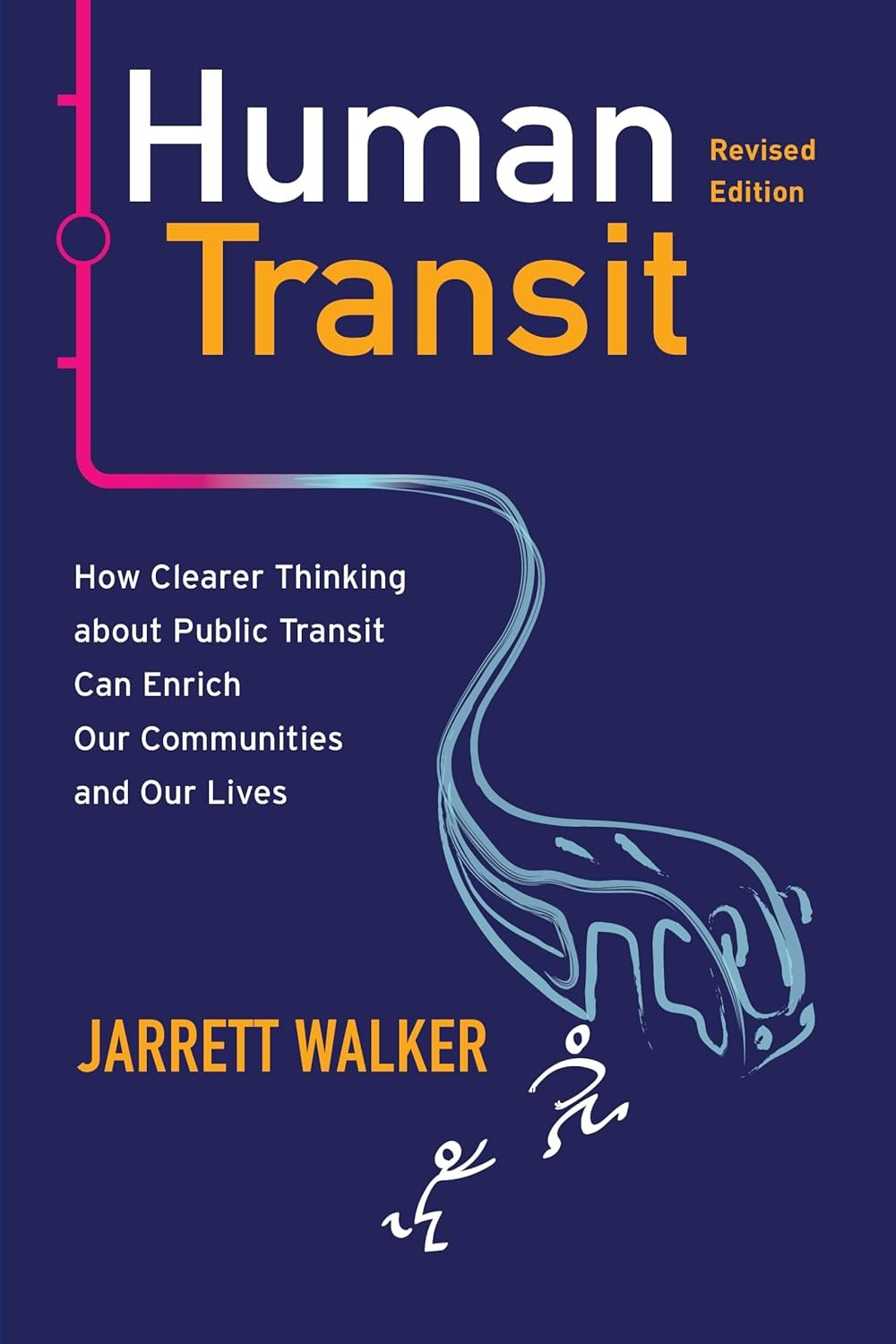Book Review: Human Transit (Revised Edition)
For the past decade, Human Transit by Jarrett Walker has been the preeminent book for non-transit planners to understand transit planning. A revised edition of the book was released earlier this year which incorporates an additional decade of experience Jarrett has obtained as a practicing transit planner. Overall, Human Transit is the best example that I’ve found of books by consultants that walk the tightrope between advocacy and execution.
Overall, Jarrett’s framework for thinking about transit is that access is the key metric that transit agencies should be paying attention to. He defines access as “the freedom to do anything that requires leaving the home.” This focus on access, and the chapter dedicated to it, is new in the revised edition. While the rest of the book has not been substantially changed, this lens of access changes the understanding of the rest of the book even if the words did not change. It provides this idea that when designed and evaluating different transit options, transit agencies should be looking at how many people will have access to jobs and school and shopping and anything else that will take them out of the house via transit versus other modes of transportation. This is a significantly different way of evaluating transit than that which was presented in the first edition.
As part of this evaluation, Jarrett identifies seven demands that people have if they are to use the transit system:
It takes me where I want to go.
It takes me when I want to go.
It is a good use of my time.
It is a good use of my money.
It respects me in the level of safety, comfort, and amenity it provides.
I can trust it.
It allows me spontaneously to change my plans.
In essence, these are the levers transit agencies can pull to affect the amount of access transit users have, and in turn the ridership of the transit system.
Having this type of framework is critical as our cities continue to grow and densify. Southern California especially has grown with cars as the primary, and often only, way of getting around. As is heard in nearly every community meeting across the southland, as we grow, we’re pushing up against the geometric limit of car dependency. Parking and traffic are constant issues that we face, and that’s simply because every car takes up 200 square feet of land everywhere it goes. The only way to continue ensuring people have access to jobs and services is by growing the transit network.
Human Transit is a vital book that will provide any city builder with the needed framework to discuss and understand transit options as our cities grow. In fact, Human Transit has something for all consultants, not just city builders. The introduction of the book includes a two-page section entitled “Listen to Your Plumber: Values Versus Expertise.” These two pages should be required reading for every consultant, regardless of industry. This is written in the context of transit planning, but it’s broadly applicable. The basic premise is that consultants can provide expertise, but that they must rely upon their clients to provide the values that will guide any given project. One primary role of any consultant is to ask the right questions to reveal what those values are.
This new edition of Human Transit should sit on everyone’s shelf right alongside Walkable City and Building the Cycling City. These three books provide the framework necessary for transitioning cities away from car dependency and towards greater access in growing cities.

